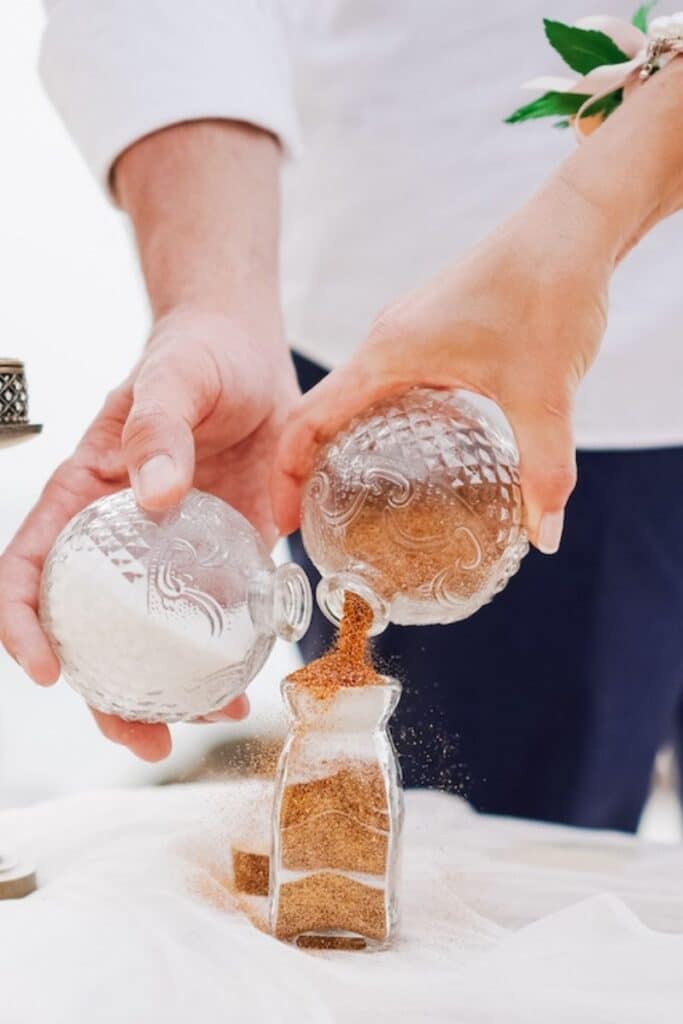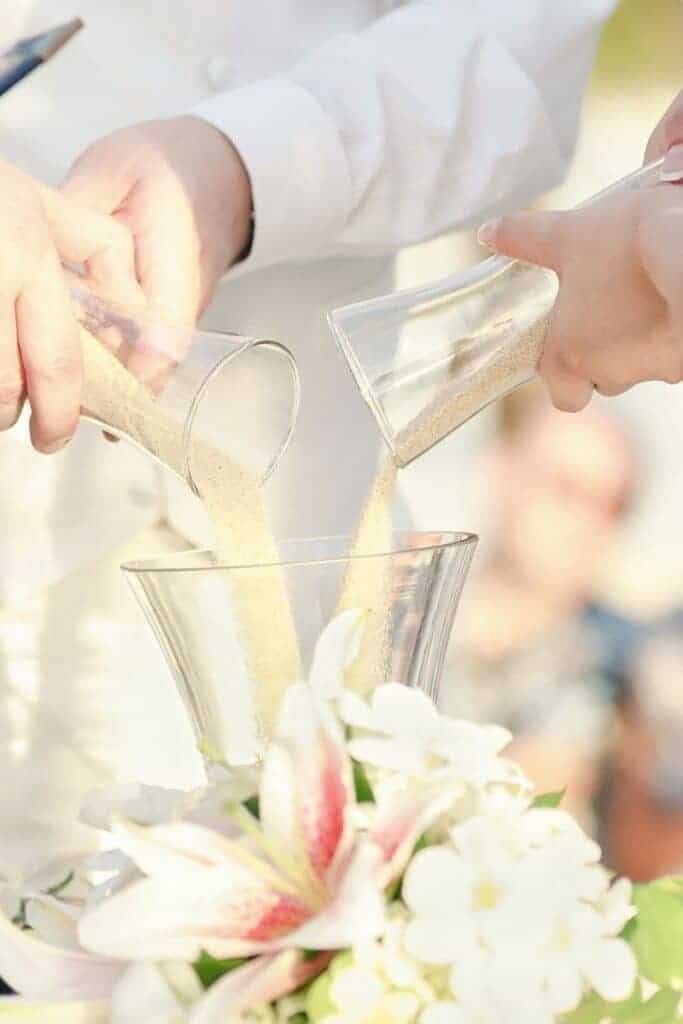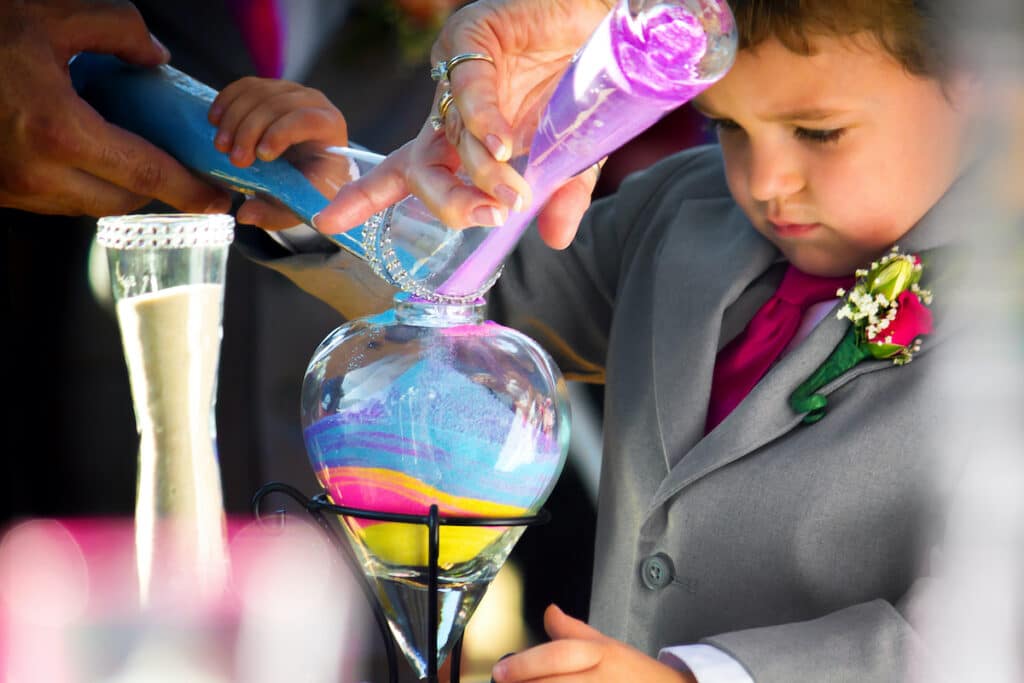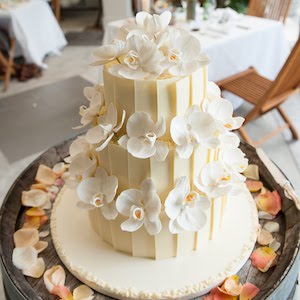All About The Wedding Sand Ceremony
A wedding or unity sand ceremony symbolizes the coming together of the happy couple and their families. The sand can be poured by just the couple or their families too. If the couple has children, this is a great way to have them participate in the wedding.

A sand ceremony
Wedding sand ceremonies involve the couple pouring sand into a single vessel after the exchange of vows. Each person has an individual container of sand. Sometimes they are different colors but they don’t have to be, though colored sand gives more of a layered effect. When the sand is poured together into a third container it symbolizes the lifelong commitment they are entering. It is like a visual representation of the promises made on the wedding day.
The final vessel is a beautiful and meaningful keepsake to have. The sand ceremony usually is performed after the receiving of rings.
The history of a sand ceremony
The history of a sand ceremony is still fairly new but it is quickly becoming a popular tradition. It was first seen as an alternative to the lighting of the unity candle ceremony used during a wedding ceremony in the Catholic faith. The candle ceremony involves two smaller candles lighting one large candle. Traditionally, the smaller candles were lit by the mother of the couple, and the larger candle by the couple themselves, using the smaller candles. It represents the uniting of the two families.
Over time weddings weren’t always held indoors, and instead moved outside. This sometimes caused issues with the lighting of the candle, when the wind would blow them out. In the 1980s, sand ceremonies became an alternative. The pouring of sand as a substitute meant it was more appropriate outside and that people were able to have a memento to keep from their wedding day.
What sand to use
There are no rules or traditions on which sand to use.
Some couples choose to collect sand from beaches they have visited or lived near as children, while others use different colors of sand to match their wedding colors. Individual colors can also be used to symbolize the separate families that come together when the sand is combined.
What vessels to use
In terms of the larger vessel, the sand is poured into, some couples choose a family heirloom, but any clear glass vessel would work fine.
If you’re looking for a special glass container you could choose –
For the separate bottles of sand that the bride and groom will hold, you can reuse glass vessels such as pretty bottles or jars, or pick some up from the craft store.

Planning your wedding sand ceremony
If you have decided this is something you’d both like to do, be sure that you discuss this with your celebrant during your first meeting. As a sand ceremony occurs during the marriage ceremony itself, they will need to include it in the order of events and explain it to their guests. The celebrant is the one who passes the vessels of sand to the bride and groom.
The sand ceremony itself usually happens in this order:
- After the exchange of rings, the celebrant introduces the ceremony and then gives the bride and groom separate containers of sand.
- The groom pours his sand first into the display vessel
- The bride follows and pours her sand in
- The couple pour their sand in together until finished
If there are children involved or other family members, they would pour their sand in too, after the groom and bride.
Sand ceremony vows
There is no official wording to say in a wedding ceremony script, but here are some examples of text to use.
The couple only
“Before each of you is a container of sand. (Insert the name of one half of the couple), this sand represents you. All that you are and all that you will be. (Insert the name of the other) and this sand represents you, all that you are, and all that you will be. Today, your sand is combined into a final vessel. Once poured, these grains of sand can no longer be separated again into their individual containers. Just as these individual grains of sand can never be separated, nor will your marriage.
(Insert the name of one half of the couple), I’d like you to start. Begin by picking up your vessel. You’ll pour about a quarter of your sand. (Insert the name of the other), you’ll now pour a quarter of your sand. Continue taking turns until your individual container is empty. “
The family and couple pouring sand
For this example, the mother or father of the couple can also pour sand into the vessel, symbolizing that the marriage is grounded by each family.
“In front of you are four colors of sand, representing both (insert couple names) and their families. We will begin with a layer from each mother, symbolizing that this marriage is grounded by each family. The next layers are for the couple. These layers of sand represent the foundation that marriage is based on as well as the strength of each individual.
For the final layer, the couple will combine their colors of sand, symbolizing the joining of their individual lives as one in marriage.
United of the children – a sand ceremony script with a child
Before each of you is a container of sand. (Insert the name of one half of the couple), this sand represents you. All that you are and all that you will be. (Insert the name of the other) and this sand represents you, all that you are, and all that you will be. There are also children who will share in this marriage; (insert children’s names.) Each child also has an individual container of sand.
Today, your sand is combined into a final vessel. Once poured, each grain of sand can no longer be separated again into its individual container. Just as these grains can never be separated, nor will your marriage and family.

You will also need to organize –
- Who will be pouring the sand – is it just the couple or will their parents be involved too?
- Sand – where will you get your sand from?
- Various colors – Are you after white sand or colored sand? If you are going to display the sand in your home, it pays to choose colors that match your home decor.
- Pouring containers – what will the small vessels be that will hold the sand you and your partner will pour?
- Display vessel – what container will you display the sand in? If you want to display your sand in your home, a common container might not do it justice.
- Table – you will need a small table or similar to hold the vessels before and during the sand ceremony.
- Afterward – who will be responsible for collecting the display vessel afterward and keeping it safe? Who will clean up the table and other things used during the ceremony?
There are many other different ways to create a special unity ceremony!


